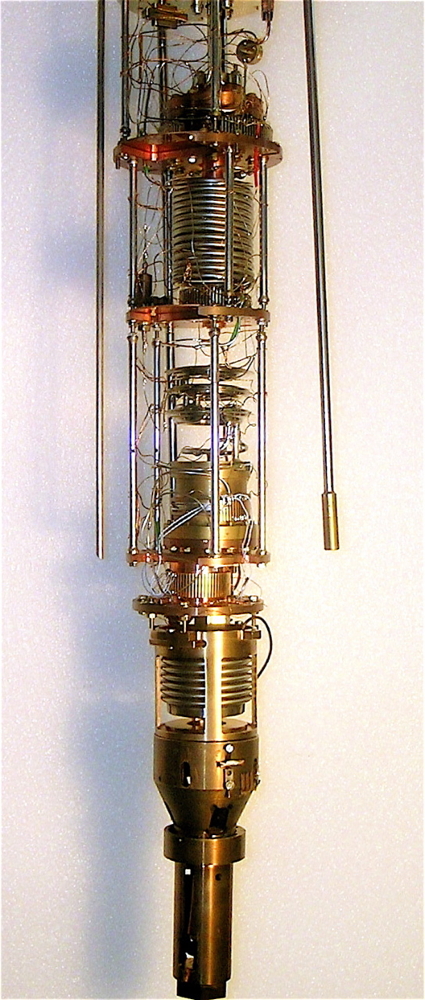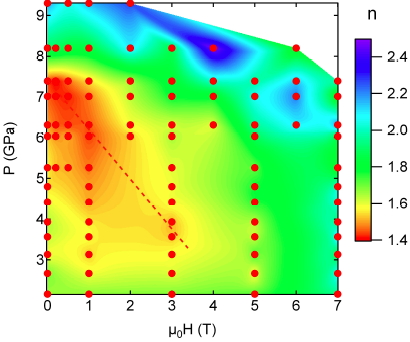
Extreme conditions of high pressure, associated with low temperatures and high magnetic field are the corner stone for the exploration of the phase diagrams of strongly correlated electron systems, and therefore for the discovery of new states of matter and of the interplay between the possible ground-states (notably super-conductivity and magnetic instabilities). But these studies are also extremely time consuming, and often lack precision around critical pressures owing to pressure variations during cool down. The new and unique device (ECCE) developed in the SPSMS completely revolutions these studies as it removes both problems.
Left photo:
In situ pressure changing device installed on the home made, dedicated, dilution refrigerator (20mK base temperature).
High pressure measurements have led to major discoveries in correlated electron systems, such as magnetically mediated superconductivity or the co-existence of ferromagnetism and superconductivity. However they are usually very time (and other resources) consuming as it is necessary to warm up the sample to change the pressure. Moreover, on cool down, phase transition in the pressure medium as well as mechanical deformation of the pressure cell unpredictably change the applied pressure by a few kbars. For sub-Kelvin experiments, a complete exploration of a (p,H,T) phase diagram can then take several months. The recently developed tool (ECCE) in the laboratory allows the pressure to be changed and monitored
in situ on a dilution refrigerator (T down to 50 mK) in a few minutes, whereas more than two days were necessary by conventional technics. This means that a complete study can be made in a matter of weeks instead of months.
In this example the low temperature dependence of the resistivity of the compound YbCu
2Si
2 was studied
versus pressure and field. The resistivity behaves as r=r
0+T
n, and the value of n is shown in the color plot. The red dots indicate all the experimental points that have been measured. n=2 is the usual hallmark of Fermi Liquid behavior (green area of the plot) whereas n<2 is indicative of quantum criticality where a phase transition (in this case to a ferromagnetic state) occurs at very low temperature. The new result here, is the shift of the critical region to lower pressures, when a magnetic field is applied

Color plot of the exponent n of the resistivity temperature dependence (r=r0+Tn). Green areas show Fermi Liquid behavior (n=2). Yellow and red show non Fermi Liquid behavior indicative of quantum criticality. Red circles show all the experimental points measured. The experiment lasted 3 weeks whereas with conventional techniques it would have taken 3 months.
This new tool opens unprecedented perspectives for much faster detailed studies as well as exploratory work, to search for example for new superconducting phases occurring under pressure. For even more flexible exploratory studies it is planned to set up a second device reaching not quite such low temperatures (300mK) but with completely cryogen free technology.
This development was carried out within the SPSMS Laboratory and supported by the ANR (projects ANR BLANC ECCE and PRINCESS).